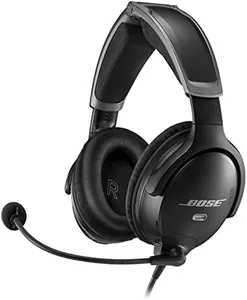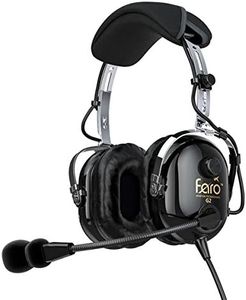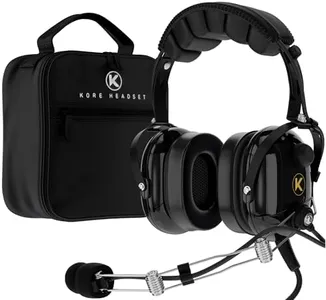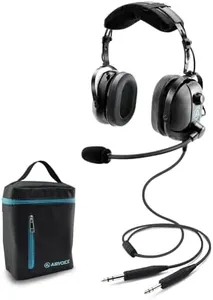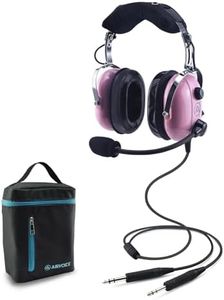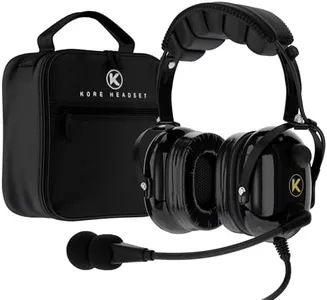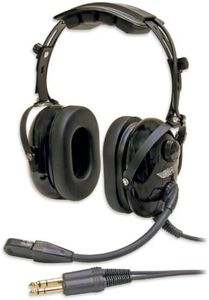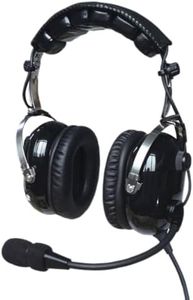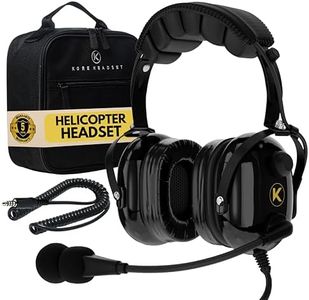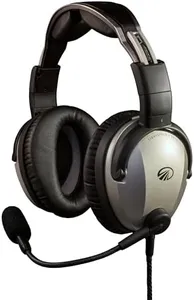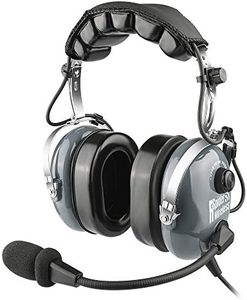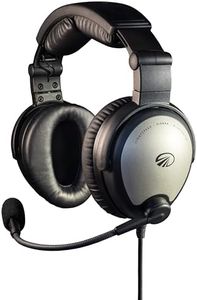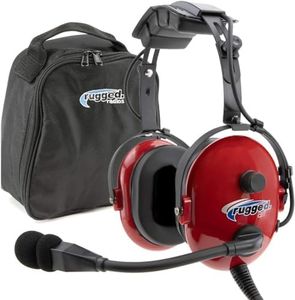We Use CookiesWe use cookies to enhance the security, performance,
functionality and for analytical and promotional activities. By continuing to browse this site you
are agreeing to our privacy policy
10 Best Pilot Aviation Headsets
From leading brands and best sellers available on the web.Buying Guide for the Best Pilot Aviation Headsets
When choosing a pilot aviation headset, it's important to focus on comfort, clarity, and protection for your hearing. A good headset makes communication easier and helps prevent fatigue during long flights. Pay attention to the key features as they directly impact your flying experience. Knowing how each specification affects usage will help you select the headset that best suits your needs.Noise Reduction (NRR/ANR)Noise reduction refers to how well a headset can block out unwanted sounds, especially the constant noise found in airplane cockpits. There are two main types: passive noise reduction (PNR), which uses ear seals to block noise, and active noise reduction (ANR), which uses electronic systems to further reduce ambient sounds. For loud aircraft or long flights, ANR can help protect your hearing and make communication more clear. PNR models are simpler and may be enough for quieter cockpits or shorter trips. If you fly often or in noisy planes, a higher level of noise reduction can keep you more comfortable and protect your hearing.
Comfort and FitComfort is about how the headset feels during long periods of wear. Factors like headband pressure, ear cushion material, and overall weight play a big role. Lighter headsets or those with soft, gel-filled cushions can reduce fatigue and make long flights more pleasant. Adjustable headbands and flexible mic booms can help you get a better personal fit. If you fly for many hours at a time, prioritizing comfort will lead to a much better flying experience.
Microphone QualityMicrophone quality matters because it affects how clearly you can communicate with air traffic control and other pilots. A noise-cancelling microphone helps filter out engine noise, ensuring your voice is picked up accurately. Some microphones are more sensitive or adjustable than others, which can help if you have a softer voice or fly in louder environments. Choosing a headset with a strong, clear microphone is important for safety and effective communication.
ImpedanceImpedance relates to how the headset matches with the audio equipment in your aircraft. Most general aviation headsets use a standard lower impedance, while military or airline headsets may use higher impedance values. It's crucial to pick a headset with the right impedance for your aircraft to avoid weak audio or compatibility problems. Checking your aircraft's requirements helps you avoid this issue.
Plug TypeThe plug type is the kind of connector a headset uses to connect to the aircraft, such as twin plugs (GA), helicopter (U174), or XLR (airliner). Using the wrong plug type means the headset won't connect properly. Always match your headset's plug type with what your cockpit supports or be prepared to buy an adapter.
Durability and Build QualityDurability refers to how well a headset holds up under regular use. Headsets made from strong materials like metal, reinforced plastic, or flexible cables tend to last longer. If you frequently fly or plan to use your headset over many years, focusing on durability can save you money and hassles in the long run.
